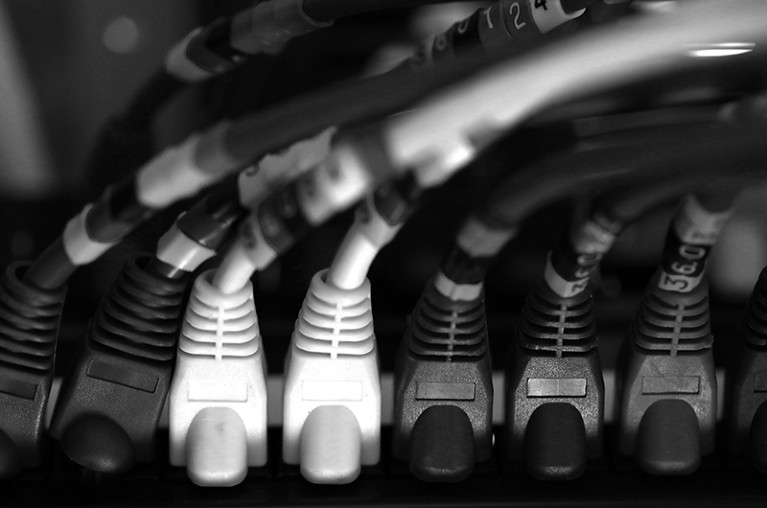
Europe and Canada have fought hard to safeguard net neutrality.Credit: Chris Ratcliffe/Bloomberg/Getty
Two decades ago, Nature ran a news story warning scientists about what could happen to their computers when the new millennium rolled around (Nature 387, 109–110; 1997). Of course, the doomsayers and their concerns about aircraft dropping from the sky as digital clocks updated to 1 January 2000 were proved wrong, and “remember the millennium bug” became a popular way afterwards to argue for inaction in the face of any growing worry.
The phrase is being used again now — by supporters of a controversial move to alter how the United States governs Internet use. Dark predictions of a two-tier Internet made vulnerable to censorship, these advocates scoff, are massively overblown. Forget the millennium bug. Now, the ending of ‘net neutrality’ in the United States should trouble researchers: the potential for problems is real.
On 14 December, the US Federal Communications Commission (FCC) is expected to reverse its 2015 move to classify broadband providers as ‘common carriers’. For the first time, this would allow Internet service providers (ISPs) to block or slow certain types of content, and to charge users more for fast access to what those companies class as premium content. Supporters argue that this is a more efficient and profitable way to allocate squeezed bandwidth than the current net neutrality. Time-sensitive information, such as instant-video communications, can be put in a fast lane and allowed to overtake less urgent information, such as e-mail traffic.
Academic debate on the topic has been bitter. Some researchers who have studied the likely effects of such a change agree that the FCC and its supporters might have a theoretical case. Strict net neutrality can be shown, in economic models of Internet traffic, to be socially inefficient (M. Peitz and F. Schuett Int. J. Ind. Organ. 46, 16–62; 2016). And offering a fast lane could help some users. FCC chairman Ajit Pai used the example of telemedicine, which he said was being hindered. (Opponents counter that telemedicine could be offered in this way under existing rules; health-care groups including the American Academy of Paediatrics fear that large companies would then dominate.)
This fear of large companies and their pursuit of profit features in many of the predicted weaknesses of a less-neutral network. ISPs, for example, could be paid by tech firms to steer users towards their products.
How this shift might affect science and scientists is not clear — and this is probably one reason why the response to the debate from research organizations has been muted. A notable exception is the Public Library of Science, publisher of the PLOS journals. It has pointed out several times this year that giving ISPs the power to sort traffic on the basis of content, sender and receiver poses a threat to scholarly journals and research.
The changes could affect traffic that routes through the United States, which includes plenty from South America, Central America and the Caribbean. So, in theory, terabytes of data sent from telescope arrays in Chile to physicists in Europe could be stuck in the digital slow lane as ISPs prioritize advertising-heavy social-media messages. Or universities and students, especially those in poorer countries, could face prohibitive access and download fees.
Many critics of the FCC’s move argue that it’s the principle of equal access to information that really counts — and that will be lost. Certainly, that’s one reason why other regions, including Europe and Canada, have fought hard to maintain and safeguard net neutrality. The European Commission, for example, enshrines in law a user’s right to be “free to access and distribute information and content, run applications and use services of their choice”. (This applies to Portugal — so, despite a widespread claim to the contrary, the nation does observe net neutrality.)
Science has made great strides in recent years to break open the walled gardens of many research fields and spread data and expertise around. The Internet — a scientific tool to begin with — has driven this revolution. As the implications of the US switch unfold, researchers and their representatives must prepare to protect this crucial progress.

 How to hack the hackers: The human side of cybercrime
How to hack the hackers: The human side of cybercrime
 The environment needs cryptogovernance
The environment needs cryptogovernance
 There is a blind spot in AI research
There is a blind spot in AI research







